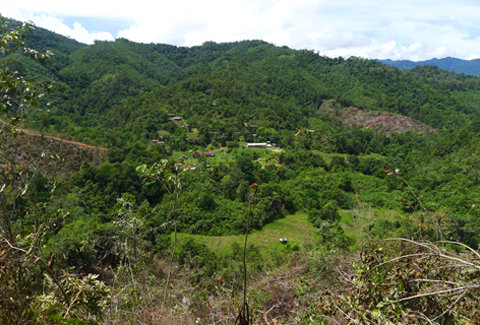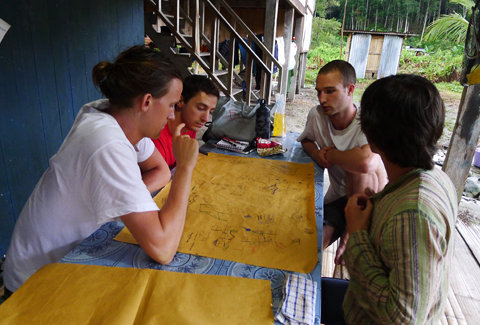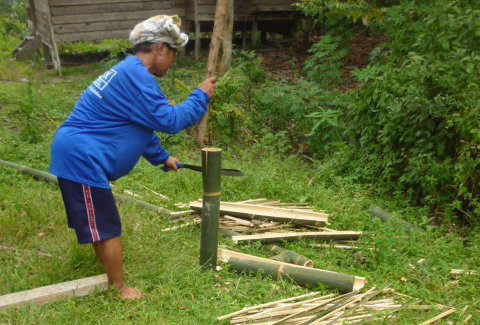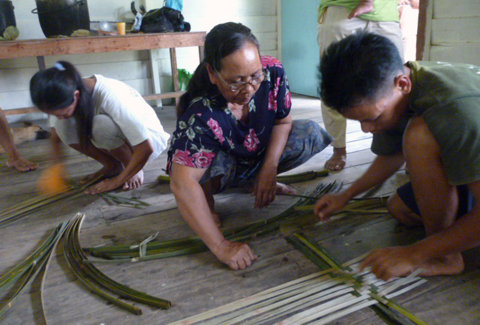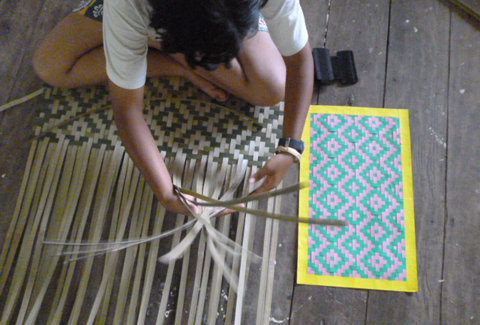By Marina Aman Sham | Communications Coordinator (Outreach), GDF
* information taken from the Project Proposal on Community Biocultural Heritage Centre: in support of sustainable livelihoods in Kg. Buayan, Crocker Range, Sabah (prepared by Agnes Lee Agama)
The construction of a new building in Buayan village is now underway. While physical work began only last month, the concept of this building, what will soon be the Community Biocultural Heritage Centre, has been long in the making.
In 2004, the community of Ulu Papar started working with a group of partners in a project to document key ethnobiological resources important for their livelihoods and how these resources are used, managed and protected. Since then, through several projects and a series of activities – fieldwork, workshops, community exchanges, training courses, expeditions and travelling roadshows – community researchers have been trained to work with their community to map key resource areas and mark them on 3D models, conduct livelihoods assessments, record oral histories, collect botanical specimens of useful plants, and produce a series of participatory videos that share the concerns of their community. These collaborative initiatives, which carried on for 8 years, have been critical in promoting the role of the community in the conservation and management of Ulu Papar. The community thus launched a process to establish Ulu Papar as a Biocultural Heritage Site for Sabah, advocating for the long-term protection of the Ulu Papar landscape and the indigenous people who live there.
The Community Biocultural Heritage Centre, its first stage targeted for completion by the end of this month, will enable the community to establish Buayan as a hub for community-based conservation and environmental education for the people of Ulu Papar as well as for visiting groups such as students, field researchers, and tourists. Its design stemmed from the concept developed through earlier consultations with the community. Arkitrek, a local social enterprise focused on sustainable design, leads the project through its design and construction stages. The community has participated in different stages of its implementation since then, through initial gatherings with representatives from Arkitrek to discuss plans, roles and responsibilities, and the approval of the building design. Community members have also participated in the preparation of woven bamboo panels that will be used as building components, and the collection of natural resources that serve as raw materials for the building.
We wish to thank GlobalGiving donors who have contributed to the ‘Help Communities in Borneo Protect Their Heritage’ campaign facilitated by the Global Diversity Foundation, as funds have provided the means for community members to expend their expertise and time towards the project. This ties in with current efforts to revive and promote traditional handicraft among the Ulu Papar community as a potential alternative livelihood, and to record and showcase oral histories of the community.
Links:
Project reports on GlobalGiving are posted directly to globalgiving.org by Project Leaders as they are completed, generally every 3-4 months. To protect the integrity of these documents, GlobalGiving does not alter them; therefore you may find some language or formatting issues.
If you donate to this project or have donated to this project, you can receive an email when this project posts a report. You can also subscribe for reports without donating.
